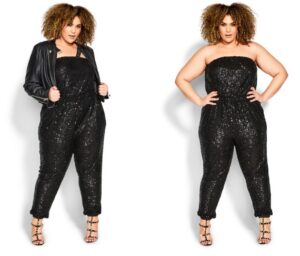To go cross-country skiing, wear moisture-wicking base layers, insulated leggings or pants, a breathable windproof jacket, insulated gloves, and warm wool socks, and choose boots with good ankle support and cross-country ski bindings. Cross-country skiing is a popular winter sport that involves skiing across flat or gently rolling terrain.
This activity offers a full-body workout and allows you to enjoy the winter scenery. However, dressing appropriately for cross-country skiing is essential to stay warm, comfortable, and protected from the elements. By wearing the right clothing and gear, you can have an enjoyable and safe cross-country skiing experience.
This article will guide you on what to wear when hitting the trails for some cross-country skiing.
Layering For Optimal Performance
When dressing for cross country skiing, layering is key to achieving optimal performance. The base layer is the first layer of clothing against your skin and should be made of moisture-wicking fabric to keep you dry and comfortable. Look for thermal insulation in the base layer to help regulate your body temperature.
The mid layer is responsible for providing additional insulation and should be made of breathable material to prevent overheating. This layer should also offer insulation to keep you warm in cold conditions.
The outer layer is essential for protecting you from the elements. Look for a wind-resistant jacket to shield you from the chilling effect of the wind. Additionally, your outer layer should be waterproof to keep you dry in wet snow or rainy conditions.
Don’t forget to accessorize properly for cross country skiing. Hats and headbands are essential to keep your head and ears warm. Neck gaiters can provide extra protection for your neck and face against the cold. Finally, gloves or mittens are a must to keep your hands warm and protected from the cold temperatures.
| Base Layer | Mid Layer | Outer Layer | Accessories |
| Moisture-wicking fabric | Breathable material | Wind-resistant | Hats and headbands |
| Thermal insulation | Insulation | Waterproof | Neck gaiters |
| Gloves or mittens |

Credit: gearjunkie.com
Choosing The Right Bottoms
When choosing the right bottoms for cross country skiing, it is important to consider several factors to ensure comfort, performance, and protection. Ski pants should be waterproof and breathable to keep you dry in wet conditions, while pants with vents allow for extra ventilation on warmer days. Tights made from moisture-wicking fabric help to keep your body dry by pulling sweat away from your skin. Look for bottoms with thermal insulation to provide warmth in cold temperatures. Some skiers prefer wearing shorts for added mobility, while insulated and wind-resistant bottoms are ideal for windy or snowy climates. Finally, consider bottoms with reflective elements for visibility, especially if you plan to ski in low-light conditions. By choosing the right ski pants, you can enhance your cross country skiing experience and fully enjoy the sport without any discomfort.
Picking The Perfect Tops
When it comes to cross country skiing, choosing the right tops is crucial for a comfortable and enjoyable experience on the trails. Performance shirts are an excellent option, thanks to their moisture-wicking properties that keep you dry by pulling sweat away from your skin. Look for shirts that are breathable and allow air circulation to prevent overheating.
Fleece jackets are another great choice for cross country skiing. They offer insulation to keep you warm, while still providing breathability to prevent overheating. Softshell jackets are also worth considering for their wind-resistant properties, keeping cold air out, and their water-repellent features, which protect against light rain or snow.
Selecting The Right Footwear
When it comes to cross country skiing, selecting the right footwear is crucial for a comfortable and enjoyable experience. One of the main components of your ski gear is the cross country ski boots. Here are some important factors to consider:
- Proper fit and ankle support: Look for boots that provide a snug fit and good ankle support to enhance your skiing performance.
- Compatibility with ski bindings: Ensure that your boots are compatible with the ski bindings you’ll be using for a secure and efficient connection.
- Wool or Synthetic Socks: Opt for socks made of wool or synthetic materials that offer moisture-wicking properties to keep your feet dry and warm.
- Insulation: Look for boots with appropriate insulation to protect your feet from cold weather conditions.
- Gaiters: Consider wearing gaiters to prevent snow and debris from entering your boots and affecting your comfort.
- Protection against snow and debris: Choose boots with a higher cuff or integrated gaiters to provide additional protection against snow and debris on the trail.
With the right cross country ski boots, you’ll be ready to hit the trails and enjoy the beauty of cross country skiing while keeping your feet warm, dry, and well-supported.
Essential Accessories For Cross Country Skiing
When planning for a cross-country skiing adventure, having the right accessories is essential to ensure a comfortable and enjoyable experience. One of the most important accessories to consider is ski gloves or mittens. These should provide insulation to keep your hands warm in the cold weather, and they should also be water-resistant or waterproof to protect against snow and moisture.
To protect your head and ears from the cold, hats or headbands with wind-blocking and moisture-wicking properties are essential. Neck gaiters or buffs can also provide warmth and versatility, serving as a scarf or a face mask when needed.
Don’t forget your eyes! Sunglasses or goggles with UV protection and anti-fog properties are a must to shield your eyes from the sun’s harmful rays and ensure clear vision on the slopes.
Lastly, a ski backpack is a handy accessory for carrying your belongings. Look for one with hydration system compatibility to stay hydrated during your ski trip, as well as ample storage space for essentials like snacks, extra layers, and a small first aid kit.
| Accessories | Features |
|---|---|
| Ski Gloves or Mittens | Insulation, Water-resistant or waterproof |
| Hats or Headbands | Wind-blocking, Moisture-wicking |
| Neck Gaiters or Buffs | Warmth, Versatility |
| Sunglasses or Goggles | UV protection, Anti-fog properties |
| Ski Backpack | Hydration system compatibility, Ample storage space |
Special Considerations For Different Weather Conditions
When planning what to wear for cross country skiing, it’s important to consider the different weather conditions you may encounter. In cold and dry conditions, it’s essential to wear insulated and wind-resistant layers to keep your body warm. Additionally, don’t forget to provide extra protection for your extremities by wearing warm gloves, hats, and socks.
In wet and snowy conditions, waterproof outer layers are a must to keep yourself dry. Look for jackets and pants that have a high waterproof rating to ensure maximum protection against the elements. It’s also important to choose quick-drying materials to stay comfortable throughout your skiing adventure.
For sunny and mild weather, it’s crucial to wear breathable and moisture-wicking fabrics to keep your body cool and dry. Look for lightweight base layers that will help regulate your body temperature. Don’t forget to apply sunscreen and wear UV protection to shield your skin from the harmful effects of the sun.
Importance Of Dressing In Layers
htmlDressing in layers is essential when participating in cross country skiing due to its importance in regulating body temperature throughout the activity. Layering offers the flexibility required to adjust to changing weather conditions, ensuring optimal comfort and performance. By wearing multiple layers, you can easily remove or add clothing to accommodate shifting temperatures and avoid overheating or exposure to excessive cold. One of the main advantages of dressing in layers is the ability to manage temperature regulation effectively. First, the base layer serves as a moisture-wicking foundation, removing perspiration from the skin to keep you dry and prevent discomfort. The middle layer provides insulation and retains body heat, while the outer layer acts as a protective shell against wind, moisture, and snow. This layering system provides versatility in adjusting your clothing to match your exertion levels and climatic conditions.
Frequently Asked Questions For What To Wear Cross Country Skiing
What Should I Wear For Cross Country Skiing?
For cross country skiing, it’s important to wear layers that are moisture-wicking to stay dry and comfortable. Start with a base layer, add a mid-layer for insulation, and finish with a waterproof and windproof outer layer. Don’t forget a hat, gloves, and warm socks!
What Type Of Pants Should I Wear For Cross Country Skiing?
When choosing pants for cross country skiing, opt for windproof and water-resistant materials. Look for pants that have a relaxed fit for ease of movement and consider wearing thermal or fleece-lined pants for extra warmth. Avoid jeans or cotton as they can absorb moisture and leave you feeling cold.
What Are The Best Shoes For Cross Country Skiing?
For cross country skiing, you’ll need specialized ski boots that are compatible with the bindings of your skis. These boots provide ankle support and have a stiff sole for better energy transfer. They are usually lightweight and have a lace or strap closure system for a secure fit.
Make sure to try on different brands and models to find the best fit for you.
Conclusion
Choosing the right attire for cross country skiing is crucial for an enjoyable and safe experience. By opting for moisture-wicking, insulating layers and well-fitted gear, you can stay warm and comfortable on the trails. Don’t forget to invest in quality gloves, hats, and footwear to protect your extremities.
Remember, the key is to find a balance between staying warm and not overheating. So, gear up and hit the slopes with confidence! Your cross country skiing adventure awaits.




